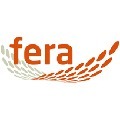
There is huge potential for using insect protein as a source of animal feed for pigs, poultry and fish in the EU according to the latest findings presented at the PROteINSECT Conference in Brussels this week.

Fera Science, who are based in York and were formerly the Food and Environment Research Agency, coordinated the PROteINSECT project with Elaine Fitches taking the lead.
Fera Science, recognised for their global expertise in safety assessments and quality data, investigated the implications of feeding insects to livestock as a source of protein.
Deliberate feeding of insect protein to farmed animals intended for food is not currently permitted under EU law, however there is a growing desire to reduce reliance on imports of protein feeds from non-EU countries.
“Environmental concerns and the EU protein deficit, along with fluctuating global protein prices, are huge concerns and it is important we look at additional sources of protein to achieve a sustainable UK agriculture,” explains Adrian Charlton of Fera Science.
“Insects are an innovative new source of feed. And according to initial studies, a viable option for farmers to consider for inclusion in livestock diets. They are also a natural component of the diet of poultry, pigs and fish, so it is logical to investigate the options of feeding insects.
“There is a lot of work to do to understand and manage safety risks for animal feed, however, early indications are very promising,” says Adrian. “In terms of a protein source, insect protein is around 86-89% digestible; significantly higher than most vegetable based protein. There is also the potential for high value by-products such as fats and oils.
That, combined with potential production efficiencies, makes insect feed attractive for the future of animal nutrition. So for example, soya yields around 0.9t protein/ha, compared to insects that potentially yield 150t/ha protein. That offers the potential of a 200 fold reduction in land use.
“Obviously we need to understand the methods of production, the costs of production and the safety elements, however early data suggests this is a viable option for the future.
“As part of this research, insects were fed to quality assured animal trials in late 2015 / early 2016, under the protocol of European feed industry standards. Control diets contained fishmeal. This was substituted at a range of varying inclusion levels with insect meal. The results showed that all animals performed in line with controls.
Samples of the fish, chicken and pork were also analysed for contaminants, taints and changes in nutritional profile, and no difference was found.
“There is little published data about the risks of using insects in feed and how these can be managed so we have to be cautious,” explains Adrian. “We are aware that different feedstocks and insect combinations result in different risks, so that has to be considered. We must look at managing the risks and methods to reduce them.
“However, early results are encouraging and the potential financial benefits may be significant for UK livestock farmers. Further research will be needed to ensure that a robust international safety framework for insects in animal feed is adopted and when that is achieved, insects have the potential to change current livestock feeding,” he concludes.

April 28, 2016 - Fera


